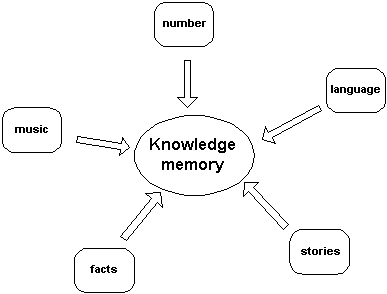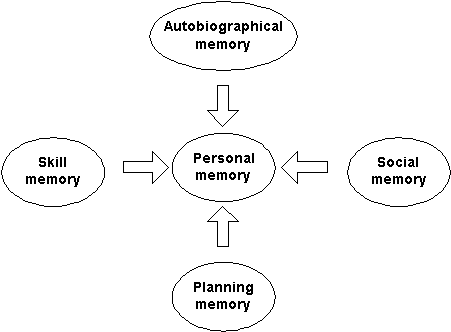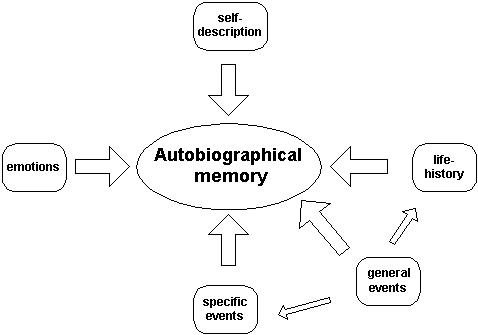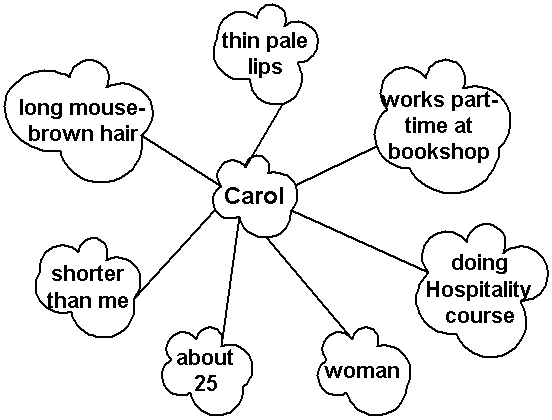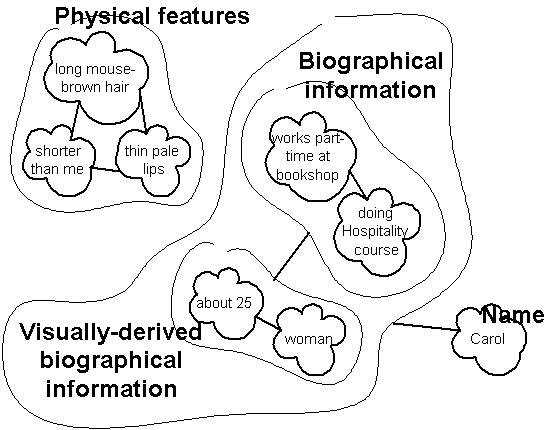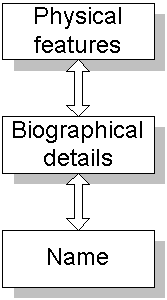Widely cited gender differences in cognition
It is clear that there are differences between the genders in terms of cognitive function; it is much less clear that there are differences in terms of cognitive abilities. Let me explain what I mean by that.
It's commonly understood that males have superior spatial ability, while females have superior verbal ability. Males are better at math; females at reading. There is some truth in these generalizations, but it's certainly not as simple as it is portrayed.
First of all, as regards spatial cognition, while males typically outperform females on tasks dealing with mental rotation and spatial navigation, females tend to outperform males on tasks dealing with object location, relational object location memory, and spatial working memory.
While the two sexes score the same on broad measures of mathematical ability, girls tend to do better at arithmetic, while boys do better at spatial tests that involve mental rotation.
Having said that, it does depend where you're looking. The Programme for International Student Assessment (PISA) is an internationally standardised assessment that is given to 15-year-olds in schools. In 2003, 41 countries participated. Given the constancy of the gender difference in math performance observed in the U.S., it is interesting to note what happens in other countries. There was no significant difference between the sexes in Australia, Austria, Belgium, Japan, the Netherlands, Norway, Poland, Hong Kong, Indonesia, Latvia, Serbia, and Thailand. There was a clear male superiority for all 4 content areas in Canada, Denmark, Greece, Ireland, Korea, Luxembourg, New Zealand, Portugal, the Slovak Republic, Liechtenstein, Macao and Tunisia. In Austria, Belgium, the United States and Latvia, males outperformed females only on the space and shape scale; in Japan, the Netherlands and Norway only on the uncertainty scale. And in Iceland, females always consistently do better than males!
Noone knows why, but it is surely obvious that these differences must lie in cultural and educational factors.
Interestingly, the IEA Third International Mathematics and Science Study (TIMSS) shows this developing -- while significant gender differences in mathematics were found only in 3 of the 16 participating OECD countries for fourth-grade students, gender differences were found in 6 countries at the grade-eight level, and in 14 countries at the last year of upper secondary schooling.
This inconsistency is not, however, mirrored in verbal skills -- girls outperform boys in reading in all countries.
Gender differences in language have been consistently found, and hardly need reiteration. However, here's an interesting study: it found gender differences in the emerging connectivity of neural networks associated with skills needed for beginning reading in preschoolers. It seems that boys favor vocabulary sub-skills needed for comprehension while girls favor fluency and phonic sub-skills needed for the mechanics of reading.The study points to the different advantages each gender brings to learning to read.
There's a lesson there.
There are other less well-known differences between the sexes. Women tend to do better at recognizing faces. But a study has found that this superiority applies only to female faces. There was no difference between men and women in the recognition of male faces.
Moreover, pre-pubertal boys and girls have been found to be equally good at recognizing faces and identifying expressions. However, they do seem to do it in different ways. Boys showed significantly greater activity in the right hemisphere, while the girls' brains were more active in the left hemisphere. It is speculated that boys tend to process faces at a global level (right hemisphere), while girls process faces at a more local level (left hemisphere).
It's also long been recognized that women are better at remembering emotional memories. Interestingly, an imaging study has revealed that the sexes tend to encode emotional experiences in different parts of the brain. In women, it seems that evaluation of emotional experience and encoding of the memory is much more tightly integrated.
But of course, noone denies that there are differences between men and women. The big question (one of the big questions) is how much, if any, is innate.
Studies of differences, even at the neural level, don't demonstrate that. It's increasingly clear that environmental factors affect all manner of thing at the neural level. However, one study of 1-day-old infants did find that boys tended to gaze at three-dimensional mobiles longer than girls did, while girls looked at human faces longer than boys did.
Of course, even a 1-day-old infant isn't entirely free of environmental influence. In this case, the most important environmental influence is probably hormones.
Hormones and chemistry
A lot of studies in recent years have demonstrated that estrogen is an important player in women's cognition. Spatial ability in particular seems vulnerable to hormonal effects. Women do vary in their spatial abilities according to where they are in the menstrual cycle, and there is some evidence that spatial abilities (in both males and females) may be affected by how much testosterone is received in the womb.
Another study has found children exposed to higher levels of testosterone in the womb also develop language later and have smaller vocabularies at 2 years of age.
Hormones aren't the only chemical affecting male and female brains differently. Significant differences have been found in the brain activity of men and women when engaged in a broad range of activities and behaviors. These differences are more acute during impulsive or hostile acts. But — here's the truly fascinating thing — nicotine causes these brain activity differences to disappear. A study has found that among both smokers and non-smokers on nicotine, during aggressive moments, there are virtually no differences in brain activity between the sexes. A finding that supports other studies that indicate men's and women's brains respond differently to the same stimuli — for example, alcohol.
What does all this mean? Well, let's look at the question that's behind the whole issue: are men smarter than women? (or alternately, are women smarter than men?)
Is one sex smarter than the other?
Here's a few interesting studies that demonstrate some more differences between male and female brains.
A study of some 600 Dutch men and women aged 85 years found that the women tended to have better cognitive speed and a better memory than the men, despite the fact that significantly more of the women had limited formal education compared to the men. This may be due to better health. On the other hand, there do appear to be differences in the way male and female brains develop, and the way they decline.
For example, women have up to 15% more brain cell density in the frontal lobe, which controls so-called higher mental processes, such as judgement, personality, planning and working memory. However, as they get older, women appear to shed cells more rapidly from this area than men. By old age, the density is similar for both sexes.
A study of male and female students (aged 18-25) has found that men's brain cells can transmit nerve impulses 4% faster than women's, probably due to the faster increase of white matter in the male brain during adolescence.
An imaging study of 48 men and women between 18 and 84 years old found that, compared with women, men had more than six times the amount of intelligence-related gray matter. On the other hand, women had about nine times more white matter involved in intelligence than men did. Women also had a large proportion of their IQ-related brain matter (86% of white and 84% of gray) concentrated in the frontal lobes, while men had 90% of their IQ-related gray matter distributed equally between the frontal lobes and the parietal lobes, and 82% of their IQ-related white matter in the temporal lobes. Despite these differences, men and women performed equally on the IQ tests.
It has, of course, long been suggested that women are intellectually inferior because their brains are smaller. A study involving the intelligence testing of 100 neurologically normal, terminally ill volunteers found that a bigger brain size is indeed correlated with higher intelligence — but only in certain areas, and with odd differences between women and men. Verbal intelligence was clearly correlated with brain size for women and — get this — right-handed men! But not for left-handed men. Spatial intelligence was also correlated with brain size in women, but much less strongly, while it was not related at all to brain size in men.
Also, brain size decreased with age in men over the age span of 25 to 80 years, suggesting that the well-documented decline in visuospatial intelligence with age is related, at least in right-handed men, to the decrease in cerebral volume with age. However age hardly affected brain size in women.
What is all this telling us?
Male and female brains are different: they develop differently; they do things differently; they respond to different stimuli in different ways.
None of this speaks to how well information is processed.
None of these differences mean that individual brains, of either sex, can't be trained to perform well in specific areas.
Here’s an experiment and a case study which bear on this.
It's all about training
The experiment concerns rhesus monkeys. The superiority of males in spatial memory that we're familiar with among humans also occurs in this population. But here's the interesting thing — the gender gap only occurred between young adult males and young untrained females. In other words, there was no difference between older adults (because performance deteriorated with age more sharply for males), and did not occur between male and female younger adults if they were given simple training. Apparently the training had little effect on the males, but the females improved dramatically.
The “case study” concerns Susan Polgar, a chess master. The Polgar sisters are a well-known example of “hot-housing”. I cited them in my article on the question of whether there is in fact such a thing as innate talent. Susan Polgar and her sisters are examples of how you can train “talent”; indeed, whether there is in fact such a thing as “talent” is a debatable question. Certainly you can argue for a predisposition towards certain activities, but after that … Well, even geniuses have to work at it, and while you may not be able to make a genius, you can certainly create experts.
This article was provoked, by the way, by comments by the President of Harvard University, Lawrence Summers, who recently stirred the pot by giving a speech arguing that boys outperform girls on high school science and math scores because of genetic differences between the genders, and that discrimination is no longer a career barrier for female academics. Apparently, during Dr Summers' presidency, the number of tenured jobs offered to women has fallen from 36% to 13%. Last year, only four of 32 tenured job openings were offered to women.
You can read a little more about what Dr Summers said at http://education.guardian.co.uk/gendergap/story/0,7348,1393079,00.html, and there's a rather good response by Simon Baron-Cohen (professor in the departments of psychology and psychiatry, Cambridge University, and author of The Essential Difference) at: http://education.guardian.co.uk/higher/research/story/0,9865,1399109,00.html

